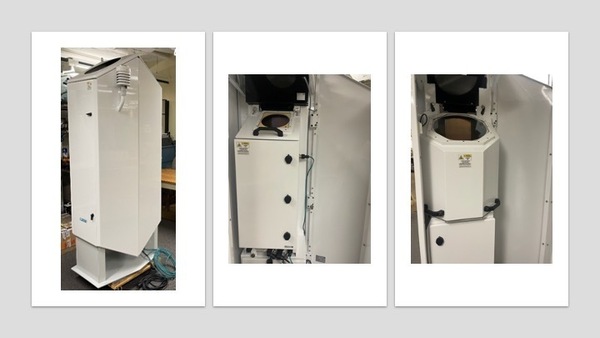Vaisala BB-DIAL Lidar

This is the first commercial Broad-Band (BB) DIAL (DIfferential Absorption Lidar) system of its kind, developed by Vaisala Inc. It offers improved moisture measurements within and above the atmospheric boundary layer, which is one of the fundamental thermodynamic variables that defines the state of the atmosphere. Water vapor is highly variable in space and time, and sensitively influences many important atmospheric processes, including clouds and fog. Continuous measurement of water vapor in the lower troposphere with high vertical resolution has been identified as a critical observation needed for weather forecasting.
Active remote sensing techniques for humidity profiling include differential absorption and Raman lidars (RL). The latter capitalize on weak inelastic scattering from atmospheric water vapor molecules to infer water vapor mixing ratio (WVMR). RLs have proven capabilities of producing accurate WVMR profiles with good vertical and temporal resolution. There are currently only a handful of these instruments that are operational worldwide. Furthermore, RLs are expensive research-grade instruments that require powerful (usually non-eye-safe) laser transmitters and large receiver apertures to detect weak inelastic scattering. RLs also require independent ancillary observations for calibration, for example, from a radiosonde or microwave radiometer, and some RLs show a degree of residual overlap leading to large biases in WVMR at low altitudes.
High-power differential absorption Lidar (DIAL) systems are an alternative to RLs that can provide continuous high-resolution vertical profiles of water vapor. DIAL produces range-resolved measurements of trace gas concentrations from the difference in attenuation observed between two closely spaced (in spectral sense) laser lines. Since two laser lines are needed, the transmitter is more complex than a RL, but generally simpler on the receiver side. The smaller telescope and the availability of relatively inexpensive laser diodes in the near IR permit compact and less expensive designs in comparison to RLs. Advantages of narrowband DIAL includes its ability to make humidity measurements without the need for calibration and that its backscatter signals are more than 2 orders of magnitude stronger than the water-vapor Raman signals. Thus, the DIAL has greater application in daytime water vapor measurements, but its laser needs to be extremely stable and spectrally pure, which adds to the complexity of its design.